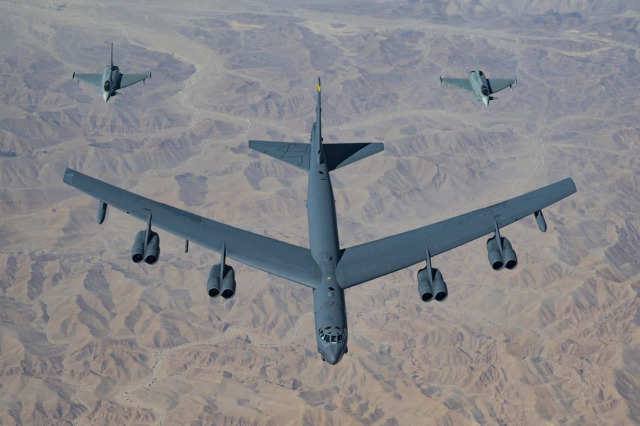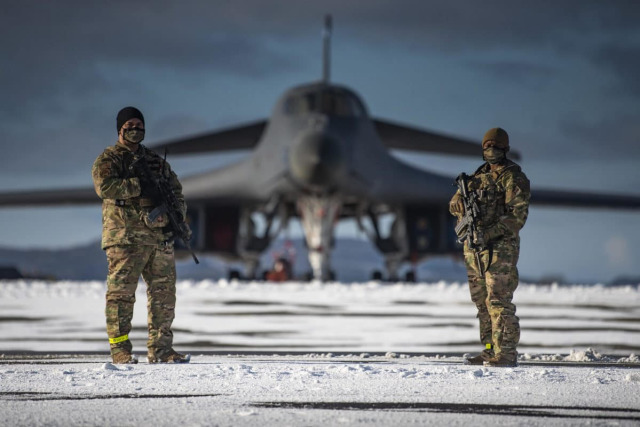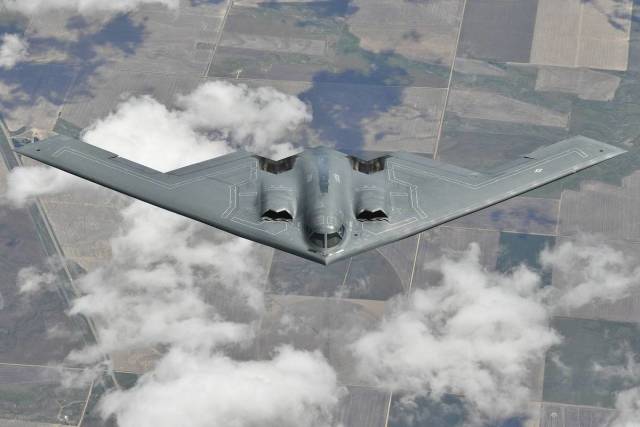According to the interpretations of Western sources, strategic bombers are designed for deep penetration into enemy airspace in order to destroy particularly important targets and, as a result, significantly weaken the combat potential and will of the enemy. Although the term "strategic bomber" is often used as a synonym for a bomber with nuclear weapons, aircraft with conventional weapons are equally capable of striking strategically important targets deep in enemy territory.
The US Air Force is the only Western military structure operating strategic bombers. They are part of the US nuclear triad, complementing intercontinental ballistic missiles (ICBMs) and ballistic missile submarines (SSBMS). The official US nuclear doctrine rejects the policy of non-first use on the grounds that this could undermine the credibility of US security guarantees for allies, and claims that nuclear deterrence is the basis of US national security. At the same time, Washington tends to represent the US nuclear arsenal from the point of view of strategic deterrence. It is believed that the preservation of three components of nuclear forces, rather than one- or two-component ones, enhances this deterrence function, providing flexibility, survivability and redundancy in the event of a failure of deterrence and the need to use nuclear weapons.

An American B-52H STRATOFORTRESS assigned to the 69th Bomber Squadron of the Royal Air Force in Fairford (Great Britain) flies over the Alpine mountains during the operation of the bomber task force in March 2022.Vulnerabilities of strategic bombers
It is argued that the resumption of great power rivalry and the increased likelihood of conflicts have increased the importance of US strategic deterrence and strategic operational capabilities. The US Department of Defense is modernizing existing strategic systems, as well as acquiring new, high-performance strategic weapons systems designed to keep up with offensive and defensive developments in competing countries. Given the lack of resources and the long-standing debate in the United States about the appropriate strategic position and combination of forces, experts inevitably question the need to preserve three types of strategic weapons. In this regard, strategic bombers were often singled out as potentially redundant.
Some arguments have been put forward regarding the alleged shortcomings of strategic bombers, especially in comparison with the inconspicuous and long-lived SSBNs that are part of the triad. Among such arguments, in particular, is the notorious fame of the main and advanced operational air bases (AvB) of strategic bombers, which makes aircraft and their auxiliary infrastructure vulnerable to a preemptive strike. Unlike ICBMs and SSBMS, bombers carrying out an attack require additional support forces, including refueling in the air. While it takes 30 minutes for an ICBM target to be destroyed, aircraft take several hours to get close to the zone of use of their weapons – the enemy has a significant amount of time to detect and track the bomber, as well as take protective measures.
In this context, bombers are vulnerable to air defense missiles and interceptor aircraft, electronic warfare, and even flashes of electromagnetic pulses. All of the above raises questions about their ability to achieve well-protected targets in the current age of high-performance air defense systems.

A US Air Force B-52H STRATOFORTRESS aircraft flies with the fighters of the Royal Oman Air Force "Eurofighter Typhoon" over Oman, March 29, 2022.Flexible option for great Power conflict
Proponents of strategic air power refute these arguments. The bases and forward operational points can be protected by air defense means. In addition, they argue that pre-emptive strikes against the AWB by themselves will make little sense as long as the United States retains its nuclear missile forces.
Although bombers can be detected by enemy satellites or long-range sensors, this does not automatically determine their target. Planes can change course several times before dropping their payload. This gives them the opportunity to remain unpredictable and use different angles of attack, unlike ICBMs, which today must remain on a given trajectory.

B-1B LANCER at Orland Air Force Base in Norway in March 2021In addition, despite the fact that enemy air defenses are becoming more sophisticated and long-range, modern bombers often use cruise missiles rather than gravity bombs, which allows them to drop their ammunition to the border of the effective enemy air defense zone.
Together, the offensive potential of strategic bombers still exceeds their vulnerability.
In addition to their main combat power, strategic bombers have a certain flexibility, which significantly increases their importance. First of all, we are talking about payload parameters. While ICBMs can be equipped with a wide range of payloads ranging from a few kilotons to more than a megaton, switching warheads is difficult and time-consuming. Loading a bomber with a nuclear or conventional munition for a specific mission provides much more flexibility.
In addition to conducting combat operations, more important, however, is the ability to use bombers as well-visible platforms for projecting force. The US President can demonstrate determination by placing them in a crisis zone or ordering them to fly near the airspace of another country with the task of contributing to de-escalation or increasing pressure as part of enemy intimidation tactics.
Finally, if the president feels the need to order a strategic strike, there are still several hours to continue analysis or negotiations before the planes reach their launch zone. Unlike missiles, bombers can be recalled at any time before weapons are dropped. This flexibility alone proves the continued relevance of the strategic bomber. The return of the Great Powers conflict underscores the need to preserve a reliable, balanced strategic triad of mutually reinforcing elements.
To be continued…
Based on the materials of the resource euro-sd.com

